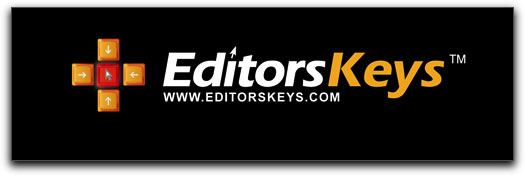
March 15, 2010
Editors Keys SL 150 USB Studio Microphone, Dual Layer Pop Filter &
Portable Vocal Booth Home Version.
SL 150 Microphone $109.77
Portable Vocal Booth including Mic Stand $243.08
Dual Layer Pop Filter $31.35
Review by Steve Douglas
With the ever-increasing desire to achieve cleaner audio for dialogue looping and narration, the editor with deep pockets can purchase superior microphones but at prices reaching $2000.00 and more. This is, more often than not, out of the reach of most.
USB microphones which, while considerably less expensive, have a history of producing poor sound marked by little bottom end with a tinny top end; very much like some of the $30.00 cheap microphones that some may get at Radio Shack.
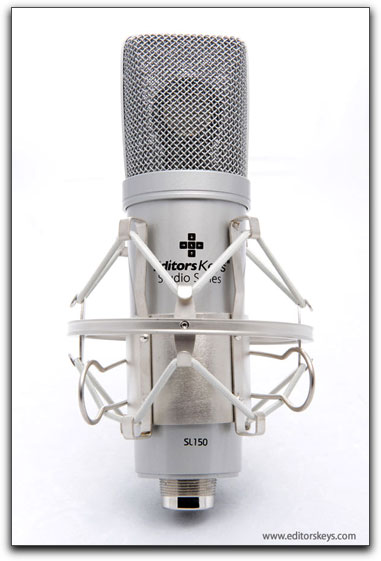
Fortunately, in the last few years there have been a few companies who have started to address the audio needs of those editors whose pockets aren't as deep as many of the better off studios. Editors Keys is certainly one of them and the quality of their new SL 150 USB Studio Microphone is certainly proof of that. Perfectly compatible with both Mac and PC users, the Editor Keys SL 150 microphone comes with a good quality shock mount, and a USB cable in a protective leather case. In several tests under different recording situations, I found the microphone to produce clean and crisp results with excellent tonal range making it a perfect microphone for dialogue or narration.
The SL 150 Hyper Cardioid microphone itself has a bit of heft to it and just holding it leads you to believe that you have a quality product. It has a frequency response of 20-18,000 Hz that pretty much covers the entire range you will need and records as an AAC mono 44.100kHz as a QuickTime file on my Mac Pro. While any professional microphone should record in, at least, 48.kHz, the 41.1kHz audio file is easily exported from QT as a 48.kHz stereo file for use in Final Cut Pro. The SL 150 contains dual 22mm internal shock mounted diaphragms. It has its own built in drivers so there is no installation process to deal with. You simply bring up your system preferences/Sound input and set to the SL 150 and you're done. When the microphone is connected to the USB port of your computer a blue light within the microphone shines on letting you know that it is record ready.
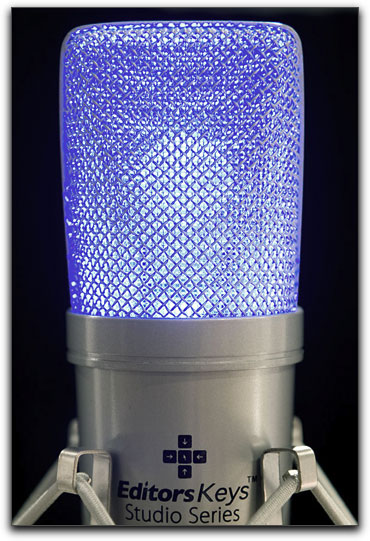
Many years ago I recall learning that almost 90% of what we hear is from reflected sound waves. Sound waves bounce off walls, pictures, furniture and even outdoor objects. To prevent bounced waves from both instrumentation and vocals, I have seen editors and musicians line their garages or offices with anything from egg cartons, blankets, absorption panels and foam of all kinds, and yet still not get the results they were looking for. I know one person who says he brings his microphone into the hall closet to do his narrations. I hope he has a light in there.
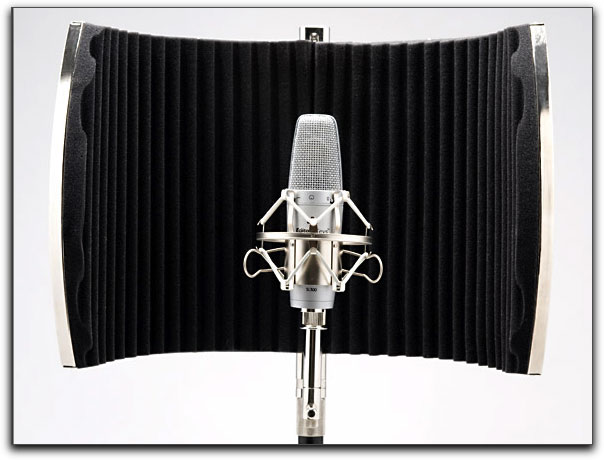
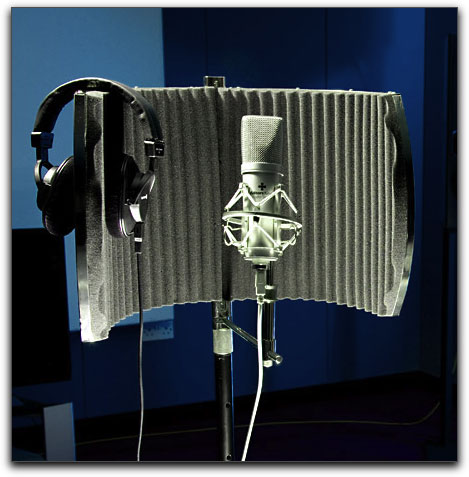
The Editors Keys Portable Vocal Booth just blew me away with just how much of an improvement to the audio it provides. While I used the microphone stand from Editors Keys, the Vocal Booth sets up easily and will fit on any mic stand you might have. The microphone stand from Editors Keys was fully adjustable in height with a safety rod that prevents accidental slipping. The tripod base also provides for multiple height adjustments and stability. The Vocal Booth is completely portable as it opens and closes from a center hinge. The interior of the hole-punched aluminum backing is lined with thick, corrugated foam while a metal rod provides support for the SL 150 mic's shock mount, which securely holds the microphone itself. A second support rod, which can be mounted horizontally on the first, provides support for another microphone for stereo usage.
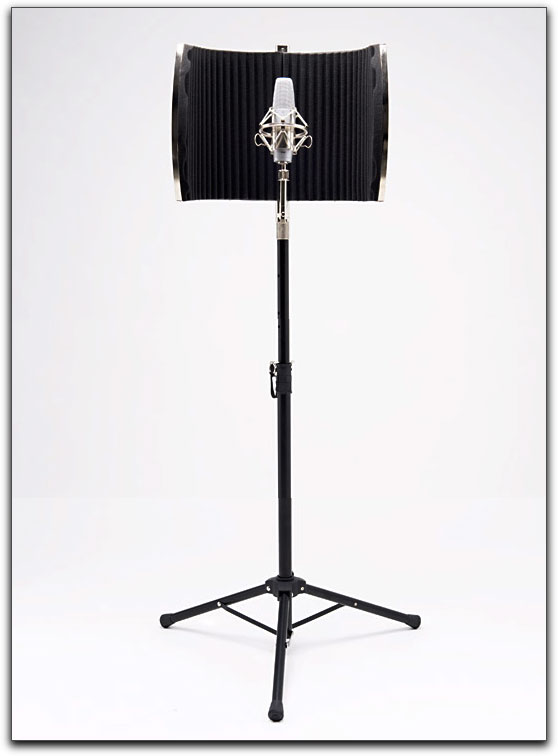
While my editing suite is lined with plenty of books and shelves, I would define it as a pretty live room that tends to bounce sound waves all over the place. An anechoic chamber it certainly is not, yet the Editors Keys Vocal Booth did an incredibly good job at preventing audio reflection providing dryer and cleaner audio narration than I have ever gotten before. The foam of the Vocal Booth diffuses the acoustic waves surrounding the microphone preventing sound from bouncing back toward the mic, thus positively affecting the quality of the audio recording. The previously noted punched holes in the aluminum backing further contribute towards providing an extra layer of audio deflection.
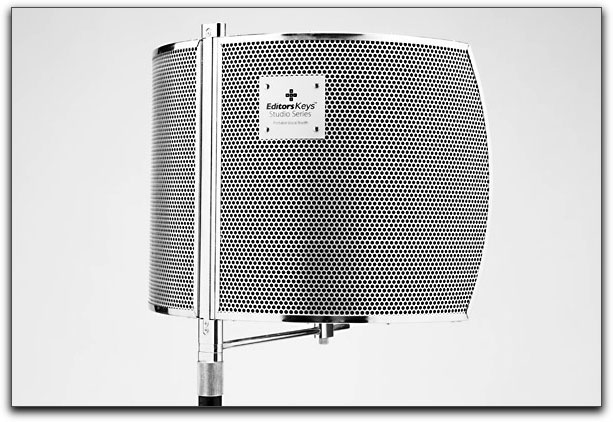
Used along with the Editor Keys Dual Layer Pop Filter and the clamp which will fit on any microphone stand you may have, I found both to be a great combination not only for providing pop noise protection but an effective reducer of sibilance in speech. The Dual Layered Pop filter has a completely adjustable arm which bends to your needs and in a comparison against a single layered pop filter, while not overly striking, I certainly could hear a noticeable improvement when using the Editors Keys Pop filter.
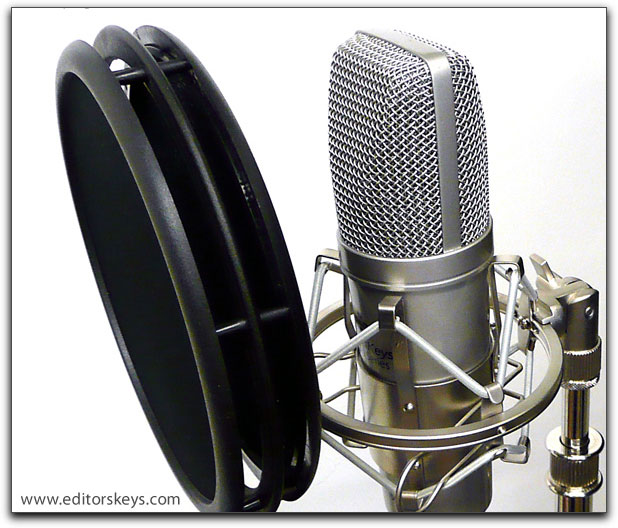
Editors Keys does offer different pricing for different combination packages of these products so I would encourage you to check out their website for prices. My bottom line for the combination of the SL 150 Microphone, the Portable Vocal Booth and Dual layered pop filter is that it is a really fine and affordable fit for any editor desiring a good, clean sound quality. I do wish the SL 150 recorded in 48kHz or even 96kHz but, other than that, I give this package a real thumbs up.
'Portable Vocal Booth'
'USB Studio Microphone'
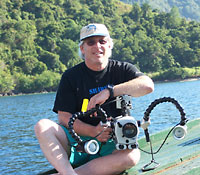
Steve Douglas is a certified Apple Pro for Final Cut Pro 7 and underwater videographer. A winner of the 1999 Pacific Coast Underwater Film Competition, 2003 IVIE competition, 2004 Los Angeles Underwater Photographic competition, and the prestigious 2005 International Beneath the Sea Film Competition, where he also won the Stan Waterman Award for Excellence in Underwater Videography and 'Diver of the Year', Steve was a safety diver on the feature film "The Deep Blue Sea", contributed footage to the Seaworld Park's Atlantis production, and productions for National Geographic and the History channels. Steve was a feature writer for Asian Diver Magazine and is one of the founding organizers of the San Diego UnderSea Film Exhibition. He is available for both private and group seminars for Final Cut Pro and leads underwater filming expeditions and African safaris with upcoming excursions to the Cocos Islands, Costa Rica, Lembeh Straits, Indonesia, and Wakatobi. Feel free to contact him if you are interested in joining Steve on any of these exciting trips. www.worldfilmsandtravel.com